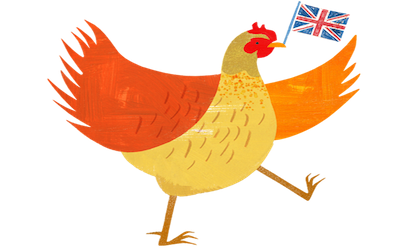 The top nine retailers across the United Kingdom have now published their latest testing results on campylobacter contamination in UK-produced fresh whole chickens (covering samples tested from January to March), according to the June 15 report by the Food Standards Agency (FSA).
The top nine retailers across the United Kingdom have now published their latest testing results on campylobacter contamination in UK-produced fresh whole chickens (covering samples tested from January to March), according to the June 15 report by the Food Standards Agency (FSA).
The latest figures show that on average, across the major retailers, 3.8 percent of chickens tested positive for the highest level of contamination; these are the chickens carrying more than 1,000 colony forming units per gram (cfu/g) of campylobacter. The corresponding figure for the previous set of results (October-December 2017) was 3.6 percent, while for the first publication (July-September 2017) it was 4.6 percent.
Michael Wight, FDA’s policy and science director said:
‘The latest figures are consistent with previous results and show we are consolidating on the significant progress made so far. We will continue to actively work with retailers and smaller poultry businesses to further reduce campylobacter levels. We would like to thank the major retailers and poultry producers for their efforts in tackling campylobacter and for working alongside the FSA to coordinate the publication of results.”
Results
The method of results analysis has been adjusted to avoid it becoming distorted by variations in sample numbers submitted by retailers. The results still show a low and stable proportion of chickens with the highest level of contamination, which is consistent with previous results.
The average overall percentage levels of campylobacter in the retailers’ data are as follows:
| Contamination levels | July-September 2017 | October-December 2017 | January-March 2018 |
|---|---|---|---|
| cfu/g less than 10 | 48.7% | 57.7% | 59.1% |
| cfu/g 10-99 | 28.3% | 22.0% | 23.9% |
| cfu/g 100-1000 | 18.4% | 16.7% | 13.2% |
| cfu/g over 1000 | 4.6% | 3.6% | 3.8% |
The method of results analysis has been adjusted from previous publications so that it more accurately reflects the variations between the sample numbers submitted by retailers. The figures from July-December 2017 have been revised to allow a meaningful comparison across the whole sampling period.
The latest results of campylobacter on chickens sampled, by retailer for January-March 2018:
- Aldi results
- Asda results
- Co-op results
- Lidl results
- Marks and Spencer results
- Morrisons results
- Sainsbury’s results
- Tesco results
- Waitrose results
The sampling and analyses are carried out in accordance with robust protocols laid down by the FSA.
Background information
Retailers have been testing chickens for campylobacter since February 2014 and publishing the results as part of a campaign to bring together the whole food chain to tackle the problem. Campylobacter is the most common cause of food poisoning in the U.K.
On Sept. 21, 2017, officials announced changes to the survey, having major retailers carrying out their own sampling and publishing their results under robust protocols laid down by the FSA. The agency is continuing to sample fresh whole chickens sold at retail, however, the focus is now on the smaller retailers and the independent market.
Consumer advice
Chicken is safe if consumers follow good kitchen practices:
- cover and chill raw chicken – cover raw chicken and store at the bottom of the fridge so juices cannot drip onto other foods and contaminate them with food poisoning bacteria such as campylobacter
- don’t wash raw chicken – thorough cooking will kill any bacteria present, including campylobacter, while washing chicken can spread germs by splashing
- wash used utensils – thoroughly wash and clean all utensils, chopping boards and surfaces used to prepare raw chicken
- wash hands thoroughly with soap and warm water, after handling raw chicken – this helps stop the spread of campylobacter by avoiding cross-contamination
- cook chicken thoroughly – make sure chicken is steaming hot all the way through before serving. Cut into the thickest part of the meat and check that it is steaming hot with no pink meat and that the juices run clear
Methodology
In previous results, overall average figures were weighted based on sample numbers. While all retailers have agreed to abide by the FSA sample protocol in terms of minimum number of samples taken, with no upper sample number specified, there are continued variations in the actual number of samples taken by individual retailers. Officials therefore consider it more accurate to present the overall position as an unweighted average of the top nine retailers.
The results using the former method, which previously published, are as follows:
| Contamination levels | July-September 2017 | October-December 2017 |
|---|---|---|
| cfu/g less than 10 | 44.7% | 52.7% |
| cfu/g 10-99 | 30.5% | 24.3% |
| cfu/g 100-1000 | 20.3% | 18.5% |
| cfu/g over 1000 | 5.1% | 4.5% |
(To sign up for a free subscription to Food Safety News, click here.)
